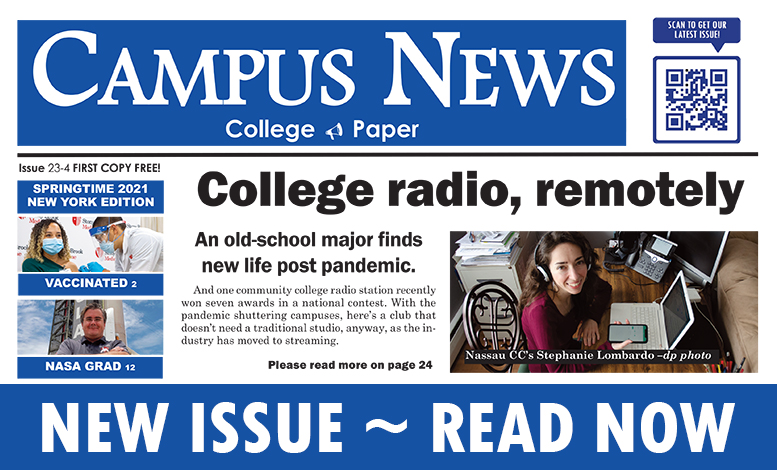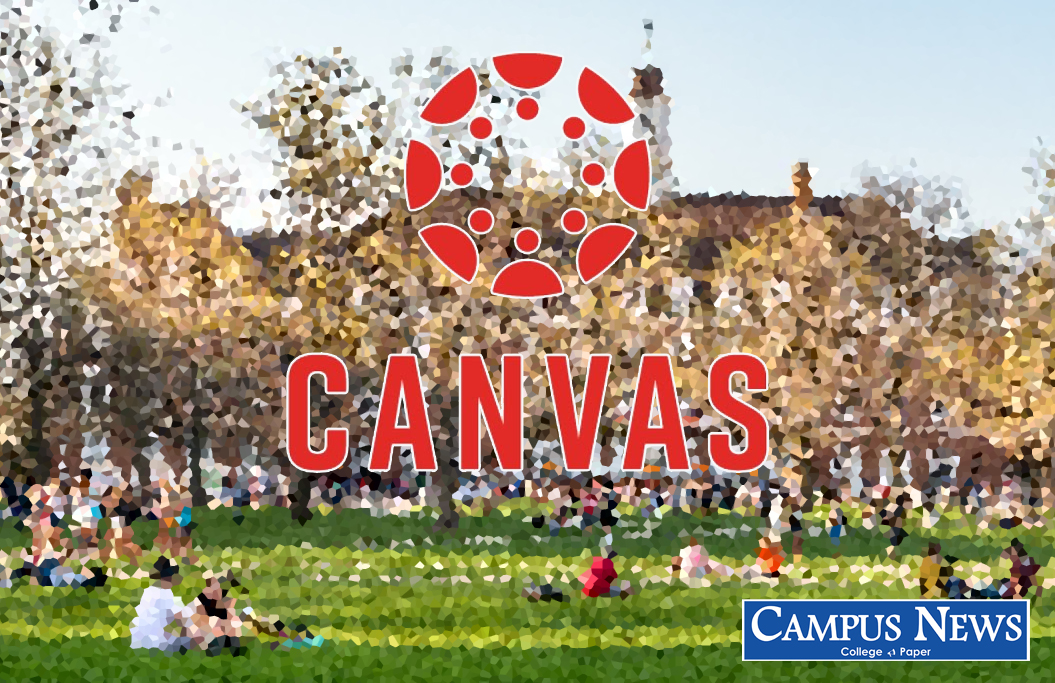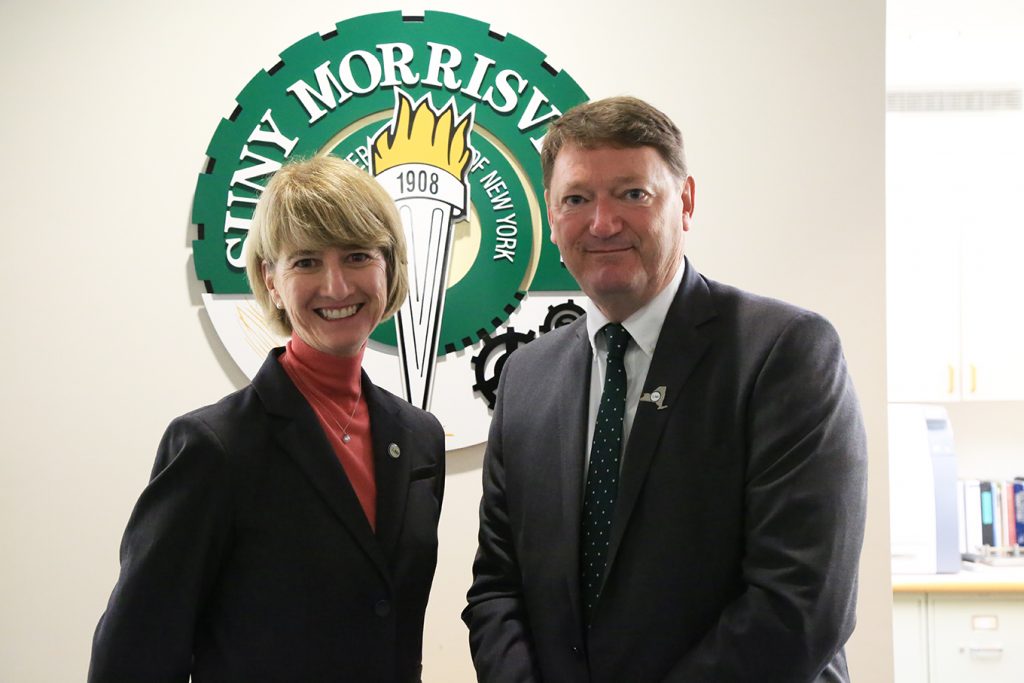By Darren Johnson
Campus News
To the lay person, it would seem that Zoom has come out the big tech winner during our year and a half of higher ed’s Coronapocalypse, and that’s not a bad answer – surely video conferencing was a lifesaver as classes were forced to go remote. At the very least, a lot of mock “Zoom University” T-shirts have been sold via online popup stores.

But Zoom is not purely an educational tool. Everyone’s using it; remote workers, kids connecting with grandma, you name it. And there’s other video conferencing software.
No, for colleges, the biggest winner to come out of the Coronapocalypse has been Canvas. The Learning Management Software (LMS) went from a neck-and-neck race with once dominant LMS company Blackboard to omnipresent, while Zoom – which isn’t an LMS – seems to get all of the headlines.
Ryan Lufkin, Senior Director of Education Product Marketing for Canvas, said in an interview that his company is nearing 50% marketshare in the college sphere (they also have K-12 software). Meanwhile, Blackboard and other companies, like Moodle, have been fading.
You have to remember, while all of these LMSes existed, not a single one was truly dominant on campuses before the pandemic.
If you think about it, what was dominant was traditional teaching. You know, in a physical classroom.
LMSes were an adjunct to teaching. Then the pandemic hit and the LMSes became the classroom. Lufkin said Canvas’s usage quadrupled.
(I’ve been in this game awhile and have used plenty of LMSes; somehow, Canvas really is better than the rest. The other LMSes seem clunky in comparison. But I digress…)
Lufkin said Canvas had been steadily improving, but the pandemic just accelerated everything. The LMS is cloud-based and grew virally among educators. He said that Canvas’s LMS is “simple, engaging, open and reliable.”
Canvas uses an Application Programming Interface (API) that allows a number of programs to work together quickly and seamlessly. “That openness is at its core,” Lufkin said. “Faculty members don’t feel locked in.”
Canvas also doesn’t mine student data. While the professor can see, for example, how much time a student spends on a certain web site associated with a class, Lufkin said that student privacy is an important part of their growth model.
But this brings up some interesting points.
While colleges will largely return to in-person instruction this fall, it won’t be as in-person as in the past.
“The more elite schools rely on the college experience,” he said. “Large state and community colleges may be a little slower to return to traditional classes.”
However, professors are now fully baptized – whereas in the past most professors used LMS software sparingly – maybe put the syllabus there are a few readings. Now they know how to fully use the software and Lufkin predicts they will continue using Canvas robustly.
“Higher education is undergoing a mind shift. The new normal is going to be more blended learning, more online classes. Students like that flexibility. The days of the big lecture hall are gone,” he said.
He’s right. Looking at the fall college schedules that have been posted thus far, while they are mostly in-person, there are smaller class sizes and more hybrid classes listed than pre-pandemic.
“There’s change fatigue/Covid fatigue; and there are people who think everything’s going to go back to normal. But it won’t. This is a part of the new normal. We have to realize we won’t go back to what we were.”
So, if Canvas is going to be a part of practically every class, what about outside the classroom? The so-called “college experience?”

“Within education, for example, there are great stories of students who enter a Zoom room before a class. They get that hallway experience,” Lufkin said. “We at Canvas are the classroom, but we don’t have the quad. How do we create that student experience? How do we become the quad?”
I brought up the topic of the quintessential student activity – school papers. During the pandemic, most ceased, or at least greatly reduced, their print runs, and this trend may continue into the fall. However, as administrators control which features an LMS utilizes, student newspapers in general aren’t a part of an LMS’s ecosystem.
If Canvas wants to create a “quad experience,” well, that’s mostly run by student organizations, not the suits.
“We are asking how do we connect student to student? Student groups and their ability to communicate? We don’t ever want to shut down that voice. Who can start conversations? Who can create videos? You do want to err on the side of supporting free speech. We want to stay as committed to that as we have been,” he said.
It’s natural for newspapers to spring up in a virtual quad. “You do have to go where the students are,” Lufkin said.
“Student newspapers take risks, and they do it in a good way. It’s that kind of ‘good trouble.’ Student newspapers have broken more stories across the country than other newspapers have.
“A newspaper is such an important and credible voice that it can’t go away. We can’t lose that personal connection.”
In any case, it looks like Canvas will be dominant on campuses for awhile, and they really can transcend what an LMS is if they can figure out how to let students also have a certain level of governance within this ecosystem. While administrators are signing the checks to these tech companies, it is the students who are paying the tuition and fees that back those checks. They deserve a voice, too, and to help define this new digital campus frontier.
“It’s a really exciting time for education,” Lufkin concluded, “because education hadn’t changed in, what, 1000 years?”






Comments